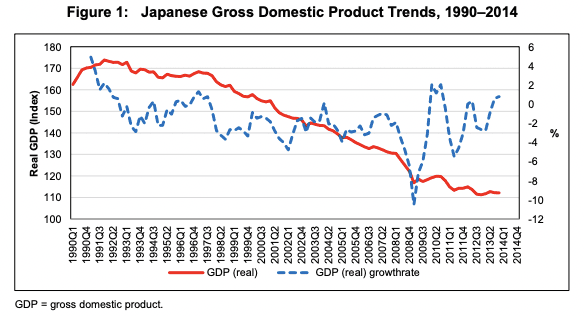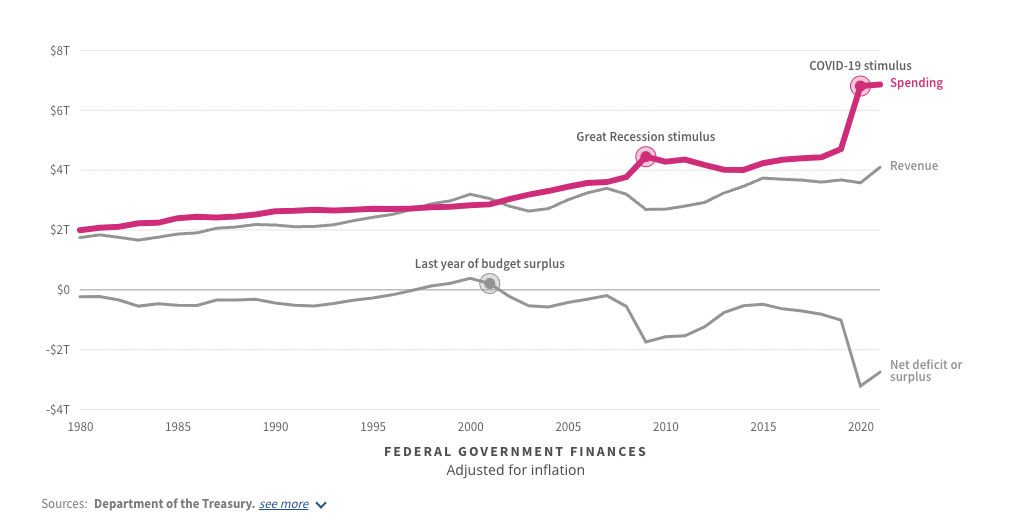I’m about to tell you everything the Fed doesn’t want to say to you.
Let’s start with the obvious: Most of us don’t like to see interest rates rise. Sure, it’s nice to make a little bit of extra money off our savings accounts, but the higher cost of mortgages, consumer loans, and all other forms of credit isn’t worth a few extra dollars of interest in our bank accounts.
But here’s the thing.
The best way to quell inflation is to raise interest rates. This does two things:
- It increases the cost to borrow, so people don’t buy as much crap.
- It increases the amount of money you make by saving, so people start to save more.
When people are spending less and saving more, demand decreases. When demand decreases, prices go down.
But how high do interest rates need to go to calm inflation?
The conventional wisdom is that nominal interest rates (the actual interest rate number) must be higher than the inflation rate to reduce inflation. This is because people need to understand that they are not losing value by holding cash. Rates higher than inflation will allow us to not lose money by saving.
With inflation at around 8%, you may be thinking that it means we need to raise rates from the current 1% mark to over 8%. But luckily, that’s not the case. As rates start to rise, inflation starts to subside, and there will be some point of equalization somewhere between the current 1% interest rate and the 8% inflation rate.
Where is equilibrium? Nobody knows.
It may be that raising rates to 2% is enough to drop inflation back to 2%, a number we should all be pretty comfortable with. But it’s also possible that we may need to raise rates to 4%, 5%, or more to achieve the desired goal.
In theory, the right move would be to continue to raise rates a little at a time until we hit that equilibrium. And then perhaps a little bit more to push inflation down to a comfortable level.
But there are a couple of real constraints that make things more complicated. Unfortunately, some of these constraints are at odds with each other.
Let’s talk about two things the Fed doesn’t like to discuss publicly.
Stagflation
The first is the risk of stagflation. You’ve probably heard this term, but for those who haven’t, it’s essentially a situation where we have both inflation and a recession.
Inflation is typically a sign of a strong economy, but uncontrolled inflation can create a downward spiral that can destroy the economy for years or decades.
An excellent example of this is Japan in the 1990s and 2000s. In 1991, the Japanese government spiked rates to curb inflation, popping their economic bubble.

This plunged Japan into a low growth, high inflation environment for the next 20 years called the “Lost Decade.”
So, how do we avoid stagflation?
Conventional wisdom says that to avoid stagflation, we need to raise rates quickly, shock the system, quash inflation, and get things back into the normal rhythm.
Many people have suggested that this is the right move for the Fed to make at this time. Even if it plunges us into recession, it’s better than risking a spiral into stagflation, which could be a much worse and longer-lasting economic downturn.
This brings us to the second constraint that we’re facing in this current economic crisis that makes things complicated.
Raising rates too high too quickly could cause an irreversible debt crisis.
When we raise interest rates, bond yields (the interest paid to bondholders) rise. Since Treasury bonds are simply debt that the U.S. creates, raising interest rates means we need to pay more interest on our national debt. Just like when we take a mortgage on a rental property, the higher the interest rate, the harder it is to cash flow due to the higher interest payments.
When interest rates and bond yields rise, the government spends more money on interest payments. This means we either have to borrow more money (again at the higher interest rate) to pay all that interest, or we need to spend less money on items such as welfare, defense, education, infrastructure, and other programs.
The government is clearly not good at spending less money, at least historically speaking.

So what would likely happen is that we’d have to start issuing more debt to make our interest payments, which would increase our total interest payments, which would force us to increase debt even more, which forces us to print more money. Do you see the problem here?
The national debt spins out of control—even more so than it already is—and we risk having to either default or restructure.
So there’s our dilemma.
We have to increase interest rates to reduce inflation, and we have to do it quickly to minimize the risk of stagflation. But, if we do it too drastically and too quickly, we run the risk of a national debt crisis.
Final Thoughts
So, next time you hear about Jerome Powell and the Fed acting in ways that make it seem like they don’t know what they’re doing, keep in mind that things are a little more complicated than they might appear.
Next time you hear the Fed admitting that a soft landing seems unlikely, this is why. Going for a soft landing (doing things slowly, hoping there’s no major economic fallout) will likely lead to stagflation. I don’t think a soft landing is in the cards this time around. Not even trying is probably for the better.
Unfortunately, we’re in a position where we have a bunch of not-so-good choices, and nobody seems to want to admit it to the American people.
While I don’t particularly enjoy making public predictions, I’ve planned for at least a couple more rate hikes in my business, likely at least a half point each. While that won’t be much fun for us as real estate investors, the alternative could be worse.